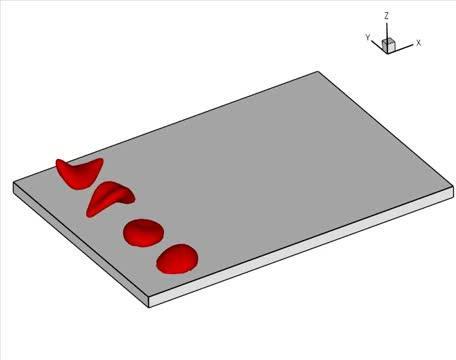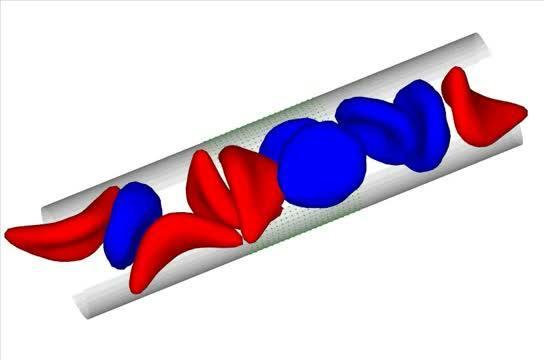
Researchers from Brown University modeled the stickiness of cells associated with sickle cell anemia. The models suggest that squishy SS2 cells are more likely to get stuck to vessel walls than the rigid, crescent-shaped cells that are most commonly associated with the disease. Once the SS2 cells get stuck, the rigid cells pile up behind them, leading to sickle cell crisis, a painful blockage of blood flow in capillaries.
(Photo Credit: Karniadakis Lab / Brown University)

Researchers from Brown University used computer models to show how different types of red blood cells interact to cause sickle cell crisis, a painful blockage of blood flow in capillaries. The models showed that sticky SS2 cells (blue) start the process by getting stuck on blood vessel walls. Rigid, crescent-shaped cells (red) that are the hallmark of the disease then get stuck behind the SS2 cells. This is the first time a biophysical mechanism behind sickle cell disease has been identified.
(Photo Credit: Karniadakis Lab / Brown University)
Source: Brown University